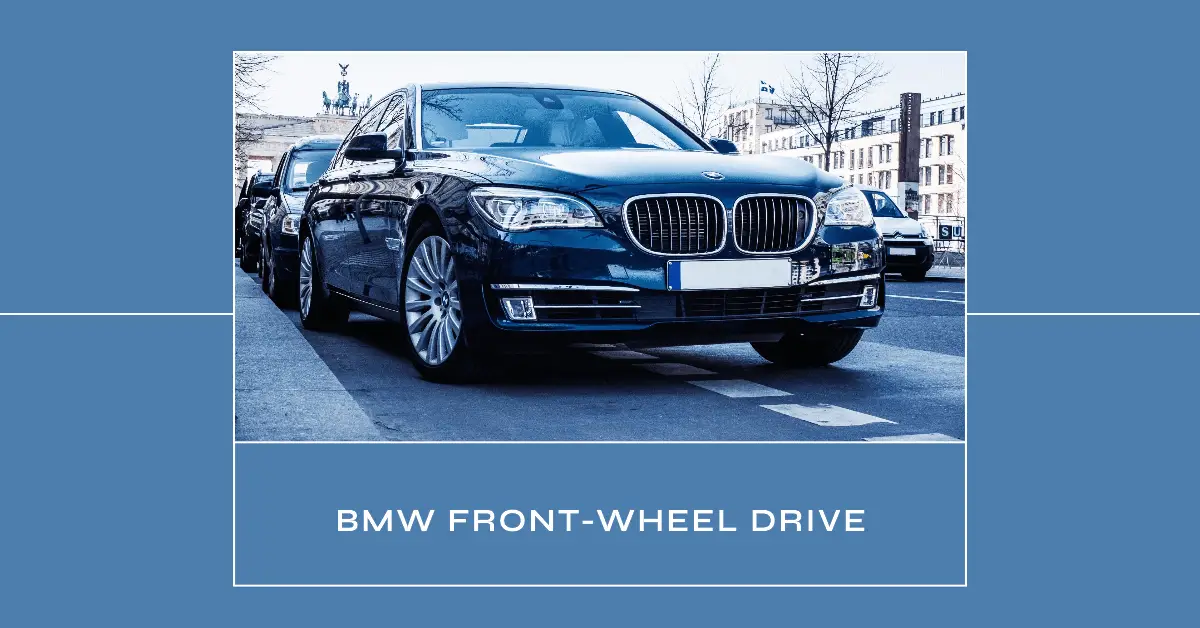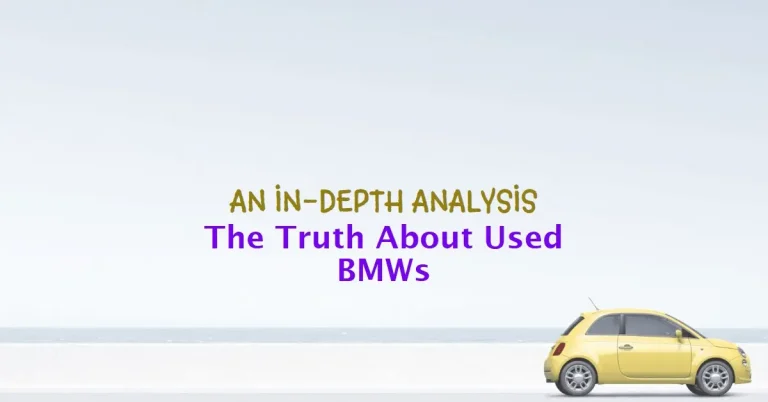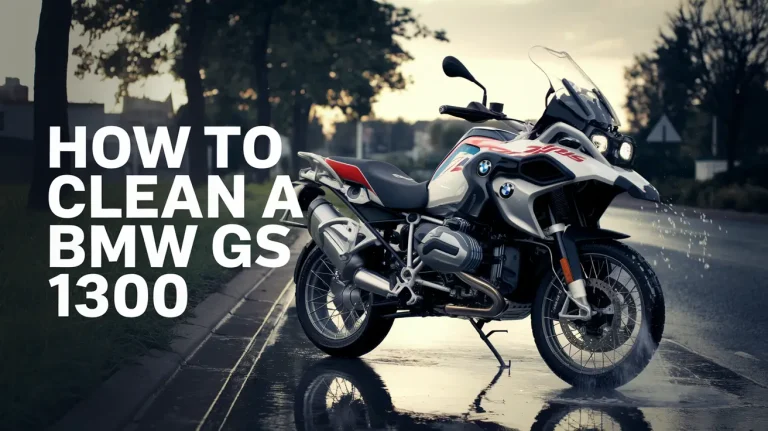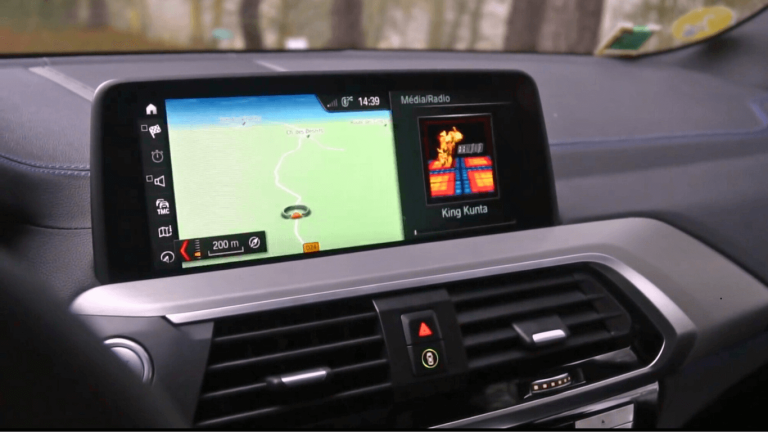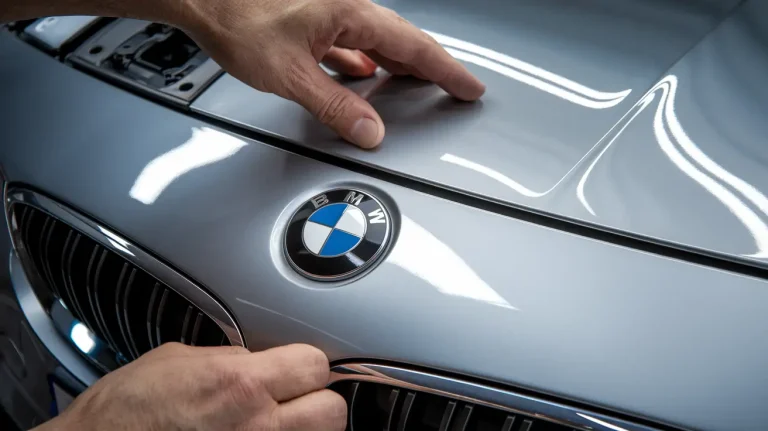Are BMWs Front Wheel Drive? The Surprising Answer
BMW is one of the most iconic luxury performance automakers, known for responsive steering, handling, and driving dynamics. But unlike many sports cars and muscle cars that use rear wheel drive, do BMWs drive the front wheels, back wheels, or all four wheels?
The short answer is that while BMW has some front wheel drive models, the majority of BMWs are rear wheel drive. However, BMW does offer all wheel drive xDrive on many model lines as well.
In this post, we’ll cover the full breakdown of BMW drivetrains and whether models like the 3 Series and X5 are rear wheel drive, front wheel drive, or all wheel drive. We’ll dive into:
- A brief history of BMW drivetrains over the decades
- An overview of which BMW models are rear wheel drive
- Details on BMW’s all wheel drive xDrive models
- The few front wheel drive exceptions in the BMW lineup
- The pros and cons of rear wheel drive vs front wheel drive
Let’s shift into gear and take a look under the hood at BMW’s drivetrain technology!
A Brief History of BMW Drivetrains
BMW has a storied history when it comes to drivetrain layout and technology. Here’s a quick look at the evolution:
Early Days: Front Engine Front Wheel Drive
BMW was founded in 1916 as an aircraft engine manufacturer in Munich, Germany. In the late 1920s and early 30s, BMW started production of luxury vehicles, starting with front engine rear wheel drive cars like the Dixi 3/15 and BMW 303.
However, in 1932, BMW introduced the BMW 3/20, its first front engine front wheel drive production car. It was a compact 4-door sedan with the engine situated longitudinally, driving the front wheels.
Rear Wheel Drive Performance Takes Off
In 1936, BMW struck gold with the iconic 328 Roadster. This lightweight aluminum 2-door sports car had a rear mounted inline 6-cylinder engine powering the rear wheels.
The 328’s responsive rear wheel drive platform and tuned suspension made it dominant on the 1930s racing circuit, winning the 1940 Mille Miglia with an average speed of 103 mph.
This success cemented BMW’s focus on rear wheel drive for performance models going forward. However, some of BMW’s economy cars in the 1930s and 40s were FWD like the 326 and the 600.
Post-War: The Neue Klasse RWD Sedans
After World War II, BMW was rebuilding and regained its foothold in the luxury market in the early 1960s with the “New Class” 1500 sedan. This again used rear wheel drive and a responsive suspension.
Throughout the 60s and 70s, BMW expanded their RWD lineup with models like:
- 1968 BMW 2002 sports coupe
- 1972 BMW 3 Series
- 1976 BMW 6 Series
- 1978 BMW 7 Series
Each of these rapidly became benchmark luxury performers with BMW’s revamped rear drive engines and chassis.
The 80s and 90s: AWD and the BMW M Division
By the 1980s, BMW was solidly focused on rear wheel drive across their model lines, from the 3 Series to the 8 Series. However, they expanded into all wheel drive capabilities.
Their high performance BMW M division produced legendary rear drive sports cars, like the:
- 1986 BMW M3
- 1988 BMW M5 sedan
- 1993 BMW M5 touring wagon
On the SUV side, BMW developed all wheel drive “xi” variants of the X5 and X3 in the early 2000s. The X5 was BMW’s first SUV originally launched in 1999.
All wheel drive added traction and stability, while maintaining a rear wheel drive bias for BMW’s acclaimed driving feel.
2000s to Today: Adding Front Wheel Drive
More recently in the 2000s and 2010s, BMW has introduced some front wheel drive models.
Front engine front wheel drive BMWs include:
- 2001 BMW 1 Series compact hatchback
- 2014 BMW 2 Series Active Tourer MPV
- 2016 BMW X1 compact SUV
The front drive architecture allows a more space efficient engine layout in these smaller vehicles. However, BMW has stuck to rear wheel drive for the majority of their luxury sedans, coupes, sports cars and performance models.
Now that we’ve covered the history, let’s take a deeper look at which modern BMW groups are rear wheel drive, all wheel drive, and front wheel drive.
Most BMWs are Rear Wheel Drive
The majority of BMW models are rear wheel drive. This includes:
3 Series
The iconic BMW 3 Series luxury sport sedan lines have all been rear wheel drive, including:
- BMW 3 Series sedan
- BMW 3 Series Gran Turismo
- BMW 3 Series Sports Wagon
Exceptions are the front drive BMW 1 Series hatchback, and the all wheel drive BMW X3 compact luxury SUV which was based on the 3 Series platform.
5 Series
The midsize BMW 5 Series executive sedan is offered solely with rear wheel drive. That includes the regular BMW 5 Series sedan as well as the more performance oriented BMW M5 high performance sedan.
6 Series
Available as a sport coupe, convertible, and four door “Gran Coupe”, all BMW 6 Series models drive the rear.
7 Series
BMW’s flagship full size luxury 7 Series sedan including the BMW M7 ultra luxury performance model are exclusively rear wheel drive.
8 Series
The BMW 8 Series returned in 2018 as BMW’s luxury grand touring 2 door sport coupe and convertible. It’s offered solely with rear wheel drive.
Z4 Roadster
BMW’s iconic two seat convertible sports car, the Z4, has always been rear wheel drive. The latest 2019 BMW Z4 M40i model makes 382 horsepower from its turbo inline 6 cylinder engine to the rear wheels.
BMW M High Performance
BMW’s motorsports division produces insane performance versions of their cars. All BMW M cars are rear wheel drive for maximum control and handling at high speeds.
M rear drive models include the:
- BMW M2 coupe
- BMW M3 and M4 coupe/convertible
- BMW M5 super sedan
- BMW M8 grand coupe and convertible
The BMW X5 M and X6 M SUVs use all wheel drive tuned for rear bias.
As you can see, most BMW sedans, grand tourers, sports cars and performance models are exclusively rear wheel drive. It provides an ideal layout for balance and handling.
Next, let’s look at BMW’s all wheel drive models.
BMW xDrive All Wheel Drive Models
While rear wheel drive maximizes driving dynamics in optimal conditions, all wheel drive improves stability in all weather and slippery conditions.
BMW’s advanced xDrive AWD system can actively distribute torque between all four wheels when needed for traction while maintaining a rear bias.
Here are the main BMW model lines that offer xDrive all wheel drive options:
X3 Compact Luxury SUV
The BMW X3 crossover SUV is offered with either rear or all wheel drive. xDrive is available on all X3 trim lines from the base sDrive30i up to the high performance X3 M.
X5 Midsize Luxury SUV
BMW’s midsize family SUV comes standard with rear drive on the sDrive40i. The more powerful engine options like the xDrive50i, M50i, and X5M all include AWD.
X6 Coupe SUV
The BMW X6 has a sloped fastback roofline on an SUV body. xDrive AWD is standard across all X6 models including the high performance X6 M version.
X7 Full Size Luxury SUV
BMW’s largest SUV, the X7 with 3 rows of seating, comes exclusively with xDrive across all model trims.
2 Series Coupe/Convertible
While the BMW 2 Series coupe and convertible are rear wheel drive by default, xDrive AWD is offered as an option.
4 Series Coupe/Convertible
The sporty BMW 4 Series which replaced the 3 Series Coupe and Convertible also has optional xDrive capabilities.
5 Series Sedans
The 5 Series sedan comes standard with rear wheel drive but has an xDrive all wheel drive option. The exception is the high performance BMW M5 which is rear drive only.
7 Series Sedans
BMW’s luxurious 7 Series full size sedan offers xDrive across most models. However, the top ultra high performance BMW M7 is rear drive.
8 Series Coupe/Convertible
The large 2 door BMW 8 Series gran turismo provides an xDrive all wheel drive option on some trims like the 840i, skipping the high powered M850i.
Z4 Roadster
For the first time in 2019, BMW’s 2 seat Z4 convertible sports car added the option for xDrive all wheel drive on the base sDrive30i and mid-level M40i.
As you can see, BMW offers a wide variety of models with capable all wheel drive. Next let’s look at the exceptions with front wheel drive.
Front Wheel Drive BMW Models
While most BMWs are RWD or AWD, BMW has added some front wheel drive models in recent years, mainly in their compact car segments.
Here are the current BMW’s with front wheel drive:
1 Series Hatchback
The entry level BMW 1 Series 5 door hatchback and wagon variants are front engine front wheel drive. This includes models like the BMW 128ti.
2 Series Gran Coupe
The BMW 2 Series Gran Coupe 4 door sedan variant brings front wheel drive in a more affordable small BMW.
2 Series Active Tourer
The BMW 2 Series Active Tourer is a front wheel drive mini-MPV people mover with 4 doors and a hatchback. It offers a practical but less performance oriented alternative for families versus BMW’s SUVs.
X1 Compact SUV
BMW’s subcompact crossover SUV, the X1, uses a front drive platform shared with the Mini Countryman. The X1 sDrive28i is front drive while the all wheel drive xDrive28i adds AWD capabilities.
As you can see, the front wheel drive BMWs focus on practicality and affordability rather than performance driving dynamics. That brings us to the pros and cons of rear wheel drive vs front wheel drive.
RWD vs FWD: The Pros and Cons
Let’s quickly summarize the relative advantages and disadvantages of rear wheel drive vs front wheel drive configurations:
Rear Wheel Drive Advantages
- Better weight distribution – With the engine positioned over the rear axle rather than the front wheels, weight balance improves.
- Better steering and handling – Reduced front weight allows more precise, responsive steering. RWD cars change direction flatter around turns.
- Traction under acceleration – Weight over the rear wheels puts the drive wheels under load when accelerating off the line, aiding traction.
Rear Wheel Disadvantages
- Traction in poor conditions – Open differentials can lead to loss of traction when a single rear wheel slips. Limited front weight means less grip.
- Oversteer tendencies – Engine weight over the rear axle increases the chance of the rear slipping in turns. Requires correction of oversteer.
Front Wheel Drive Advantages
- Traction in poor conditions – The front wheels pull the weight of the engine for extra grip in rain, ice, and snow driving when accelerating.
- No oversteer – Heavier front resists slipping in tight turns. Understeer is more predictable.
- Affordability – No need for a central driveshaft allows simpler engineering for more affordable vehicles.
Front Wheel Disadvantages
- Torque steer – Uneven traction can pull the front wheels side to side under hard acceleration.
- ** ballooning** – Weight and torque on the front wheels reduces responsiveness in corners. FWD cars tend to push through turns.
- Weight distribution – More front weight reduces rear grip and balance in braking.
In summary, rear wheel drive is preferable for performance driving and all wheel drive with a rear torque bias offers a good compromise. Front wheel drive focuses on simplicity and traction but compromises dynamics.
Conclusion
BMW has a long history with rear wheel drive performance vehicles dating back to classics like the 328 Roadster. While they have added some front drive models in recent years, most BMWs remain rear wheel drive including their luxury sedans and sports cars.
All wheel drive xDrive models from their SUVs to their sports coupes add stability and traction when needed while maintaining a rear wheel drive feel. It provides the best of both worlds – dynamics and all weather grip.
So in answer to the original question – no, the majority of BMW models are not front wheel drive vehicles. BMW continues to use rear and all wheel drive platforms to produce responsive luxury vehicles with acclaimed driving feel.

